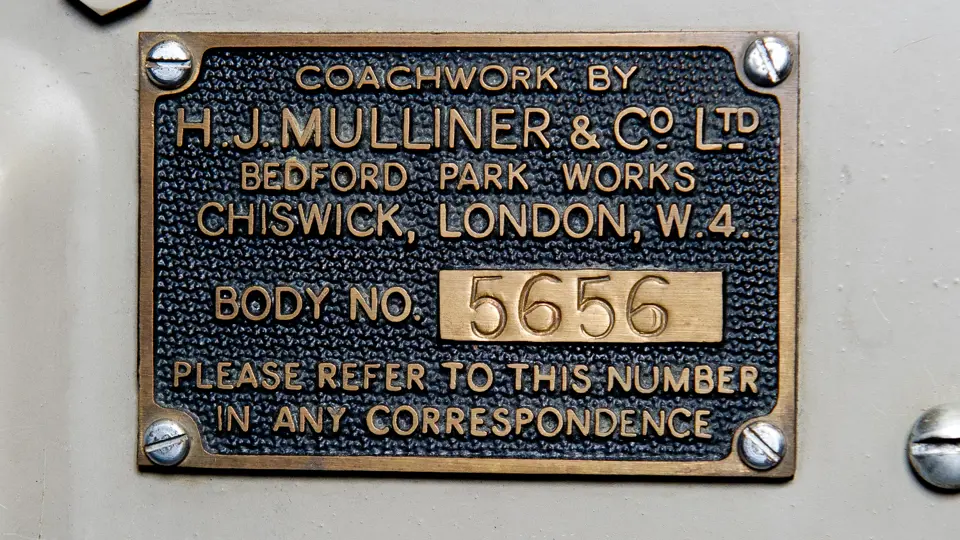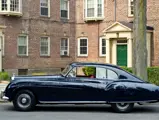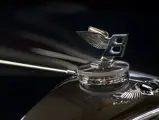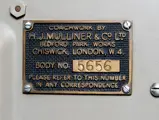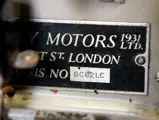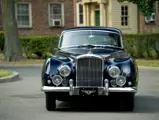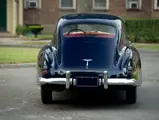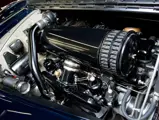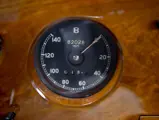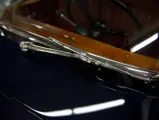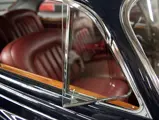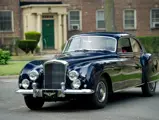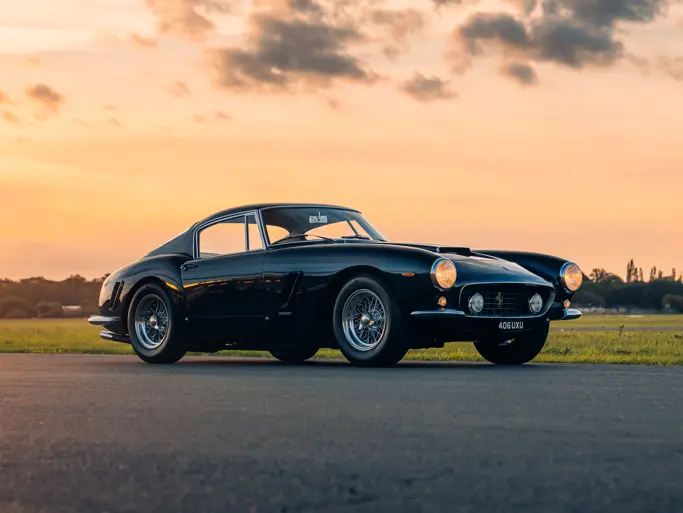155 hp, 4,887 cc, inlet-over-exhaust, two SU carburetors, six-cylinder engine, automatic transmission, independent front suspension with coil springs, rear semi-elliptic leaf springs with live rear axle, vacuum-assisted, four-wheel hydraulic drum brakes. Wheelbase: 120"
- Bought new by Laurence Rockefeller as a gift to his wife Mary French Rockefeller
- The fastest production car of its time
- One of 193 Fastback Continentals; one of only 43 delivered with left-hand drive
- Automatic transmission and air conditioning
- Always fastidiously maintained, without regard to expense
It’s fair to say that no postwar Bentley has enjoyed the reputation of the Fastback Continental, with which Rolls-Royce conjured up memories of high-speed European touring, as it was enjoyed by its wealthy clientele between the wars. The idea of steady cruising at 100 miles an hour was as magical in those days as 150 mph would be today.
The origins of the Continental actually trace back to the 1938 Bentley 4¼-Liter coupe, bodied by the French designer Georges Paulin for Andre Embiricos, the Greek shipping magnate. Thanks to its streamlined body and lightweight construction, the Embiricos Bentley lapped Brooklands at 114 mph in 1939 and proved capable of more than 120 mph on the German autobahns, returning 20 mpg at 80 mph. The Embiricos Bentley led directly to the Mk V, of which only 11 were built before WWII, and its high-speed variant, the Corniche.
R-Type Continental
The stage was set for the postwar Continental, including the enthusiastic support of the first postwar Rolls-Royce Managing Director, Dr. F. Llewellyn Smith. In 1946, Rolls-Royce and Bentley Motors moved operations from Derby, where aircraft engines had been built to support the war effort, to Crewe, where the Works again began building motor cars. The first postwar Bentley model, the Mark VI was replaced by the R-type in 1952. The first R-type Continental, one of the most famous Bentley cars of all time, was fitted with the same H.J. Mulliner fastback coupe design as the car being offered today. This first car’s owner was the famous Bentley enthusiast and Bentley Drivers’ Club patron, the late Stanley Sedgwick, and it carried the British Registration Plate “OLG 490” thereafter, always affectionately known as “Olga.”
The Autocar raved about the Continental in its articles, while observing that it was only available for export (the sale price of £4,708 making that point moot in postwar Britain, anyway). Flushed with pride, the article concludes, “this Bentley is a modern magic carpet which annihilates great distances and delivers the occupants well-nigh as fresh as when they started. It is a car Britain may well be proud of, and it is sure to add a new luster to the name it bears.”
Many consider the R-Type Continental the flagship Bentley that re-introduced the marque into the prewar high-speed touring market. The designers paid careful attention to weight and drag, and along with numerous modifications to the standard R-type Bentley, they created the fastest production car of its time. Very low production numbers guaranteed the mystique of the Continental.
Other coachbuilders of the era copied the spare, unique yet under-stated H.J. Mulliner design, but none were as successful, and this distinctive model remains the benchmark for all Bentley Continentals.
All Continentals were coachbuilt and are immediately identified by their distinctive chassis numbers beginning with “BC.” There were 208 R-type Continental cars built, and 193 were fitted with the extremely popular H.J. Mulliner “Fastback Coupe” body, like this example. Of the 208 cars built, only 43 were left-hand drive from new, and of those 43, only nine were fitted with an automatic gearbox.
Those who know these cars know the high-speed rear-axle configuration puts considerable wear on the first and second gear of the manual transmission. For this reason, many of the Continentals originally fitted with manual gearboxes have been converted with automatic transmissions. But this car came new from the factory with automatic transmission.
Chassis BC6LC and the Rockefellers
This stunning example was finished in midnight blue with maroon Connolly leather interior when ordered by Laurence Rockefeller. It was shipped from Southampton to New York on April 27, 1954 on the SS Mauretania. The factory build sheets show that the car was ordered with very specific requirements by Rockefeller: “sealed beam headlamps, flashing indicators (no unit) bonnet fastening from interior, center armrest in rear seats, white walled tires (reversed), no driving mirror, W. B. bumpers, two fog lamps, under dash heater, armrest in doors, R.H. door locks, safety guard tubes and a motor Anesoid /Altimeter.”
Mr. Rockefeller was of course a member of the prominent American Rockefeller family. Born in New York City and educated at Princeton and briefly at Harvard, Rockefeller was not only a pioneer in the field of venture capital and a successful financier but also a devoted philanthropist and conservationist. His gift-giving nature held true at home as this car was a gift to his wife Mary French Rockefeller. In fact, the factory build sheet shows that her monogram (MFR) was placed on the door before leaving the factory. Mary and Laurence were married in 1934, and their families had been close for years as each of their mothers were dear friends. In fact, when Laurence’s brother Nelson attended Dartmouth, he shared a room with Mary’s brother. Mary came from a prominent family too and was the granddaughter of Frederick H. Billings, the American lawyer and financier who was not only president of the Northern Pacific Railway but whose name has graced everything from a U.S. warship to the city of Billings, Montana. Laurence and Mary were married for the rest of their lives, until she passed away in 1997 and he seven years later in 2004.
As for this lovely car, she retained ownership of the Bentley until January 1960 when it was sold via respected Rolls-Royce and Bentley dealer J.S. Inskip to John F. Merriam, the Chairman and CEO of Northern Natural Gas Company in Omaha, Nebraska. The son and brother of former Chicago mayoral candidates, Merriam ultimately became a life trustee of the University of Chicago.
Merriam arranged to have air-conditioning added by Inskip at a cost of $1,050. He kept the car until April 10, 1972 when he sold it to Virgil Campbell, who drove it for 29 years until June 1, 2001, when it was bought by Peter Hageman. Hageman, a well-respected Rolls-Royce and Bentley enthusiast, sold it to John Bradley on July 1, 2003, and it was Bradley who commissioned mechanical work in 2004 from Charles Agapiou in Santa Monica and the Pebble Beach award-winning Mosier Restoration in Inglewood, both in California. Records for this work accompany the car.
It was left to subsequent owner Steve Wolf to complete BC62LC’s re-commissioning, and he embarked on an extensive cosmetic restoration of the interior by Vantage Motorworks in Miami, Florida in June 2007. The complete records are included with the car and total in excess of $85,000. Indicating around 80,000 miles, BC62LC was completely serviced, the interior was re-trimmed in the present gray Connolly leather, while the extensive wood was removed and refinished to the highest standards. This extensive documentation of such work, along with records of proper maintenance, validate the high level of care this special Bentley has always enjoyed.
The R-type Continental remains one of the all-time, highest-rated, high-speed touring motor cars and deserves a prominent place in any collection. It is, quite simply, the perfect touring car: a testament to the greatness of Bentley, especially when one considers that a car almost sixty years old can still produce a sustained cruising speed at over 100 mph, without undue trouble.

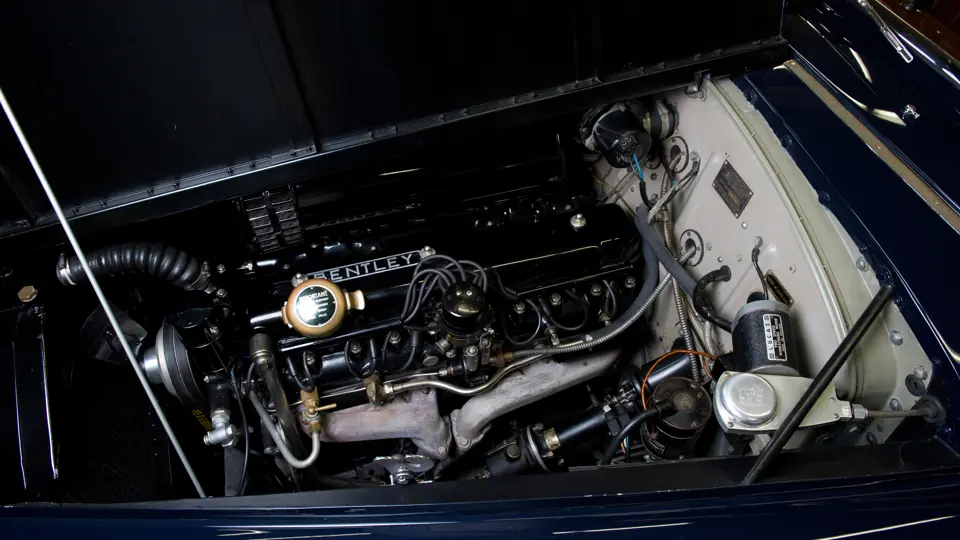


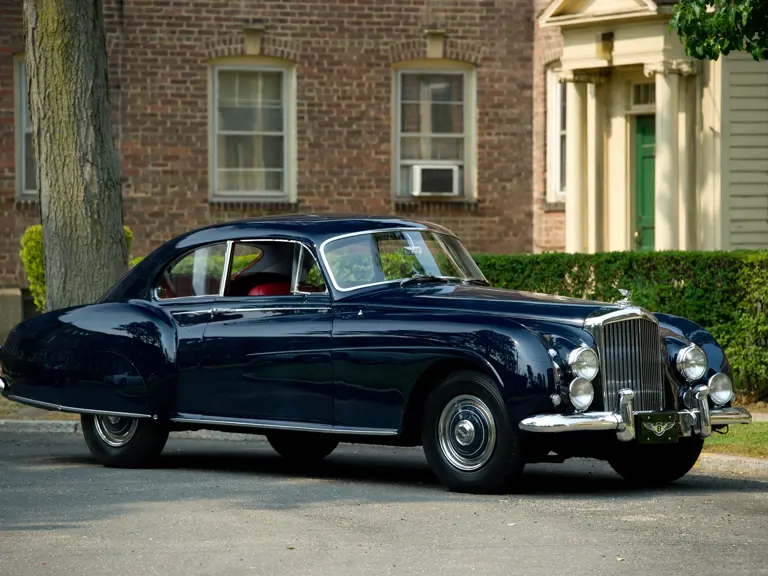

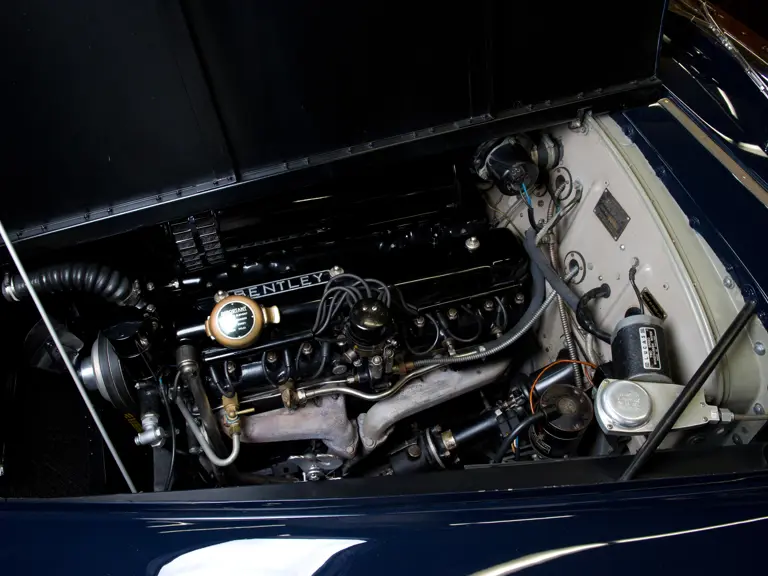

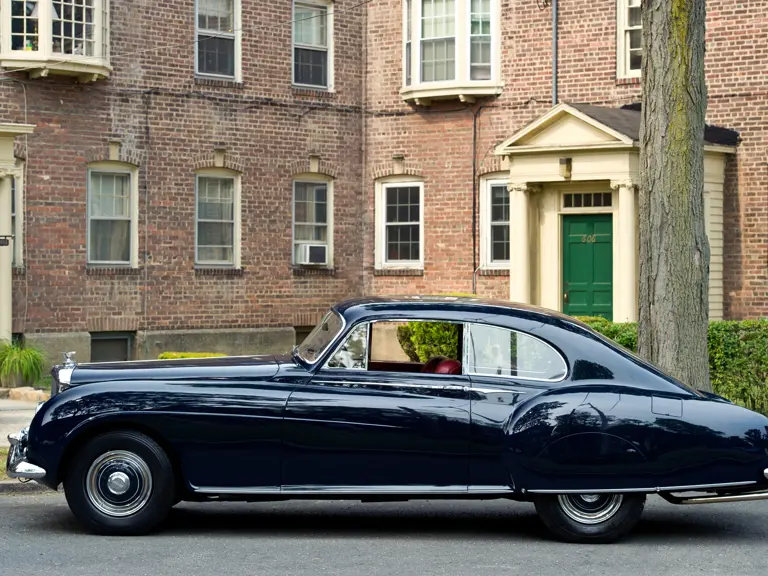
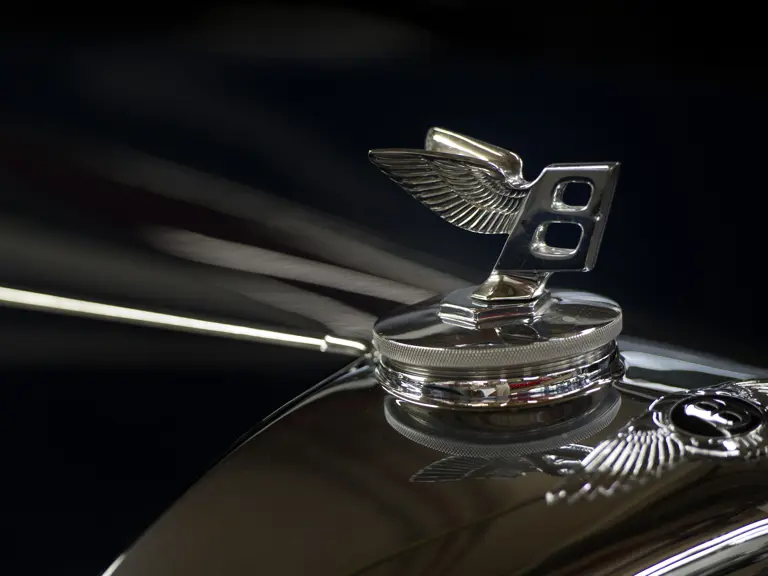
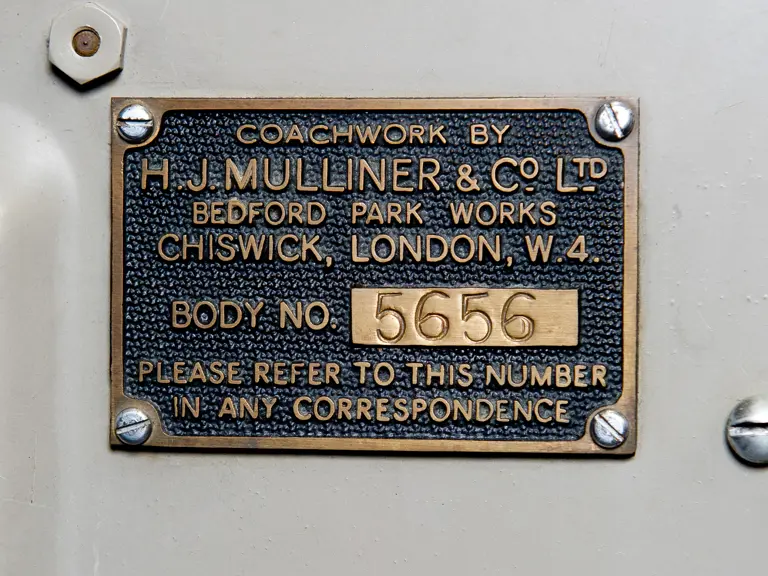
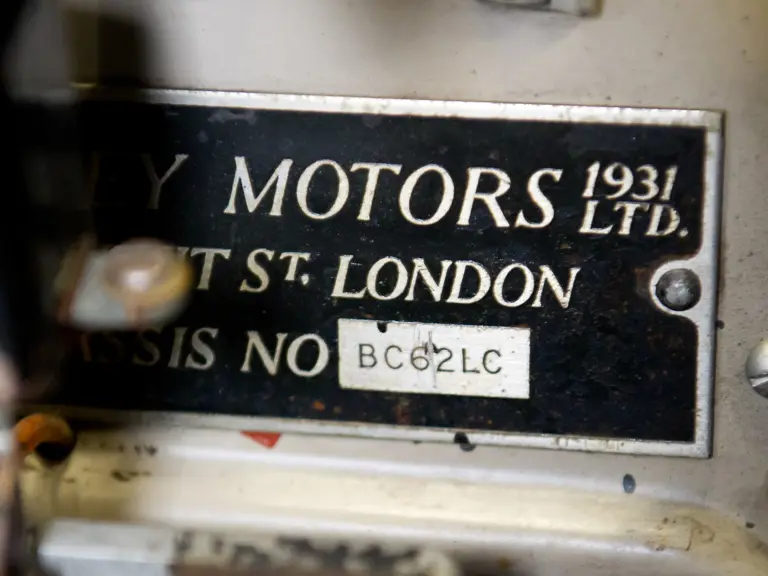
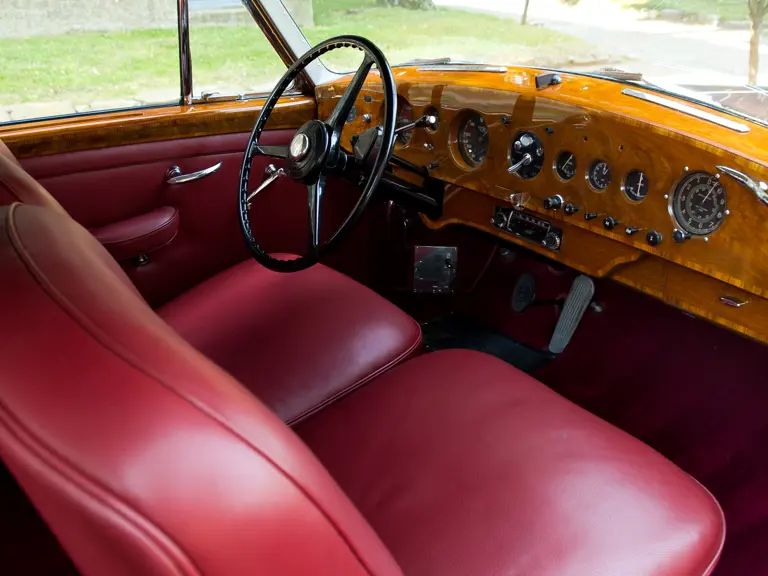
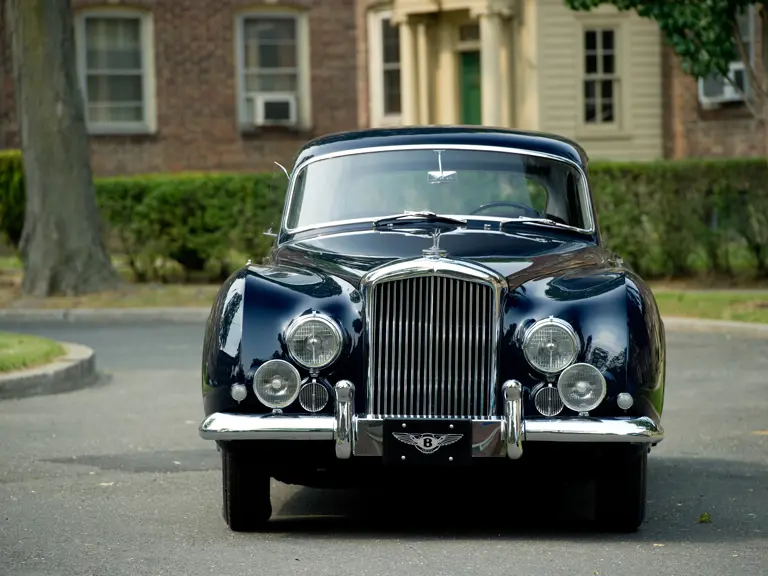
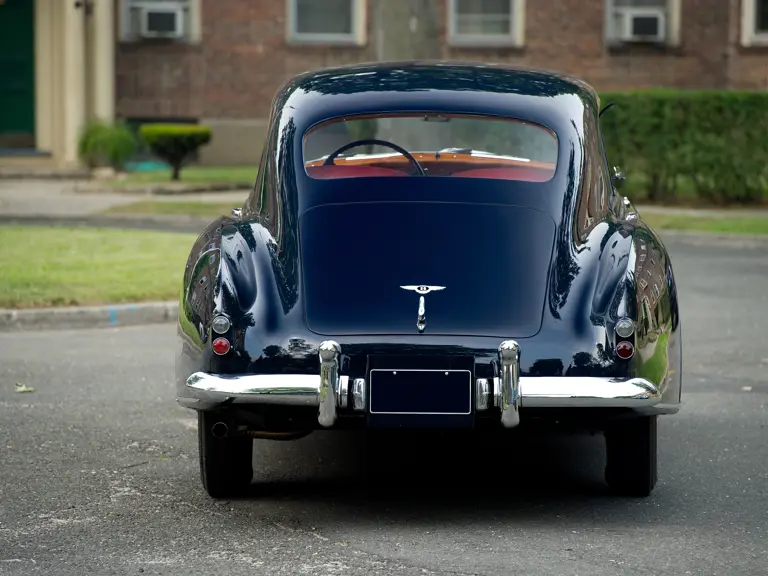
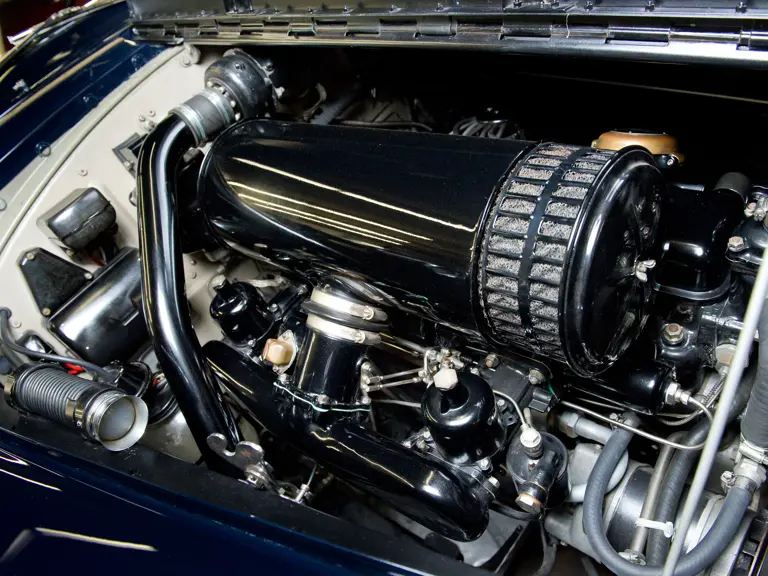
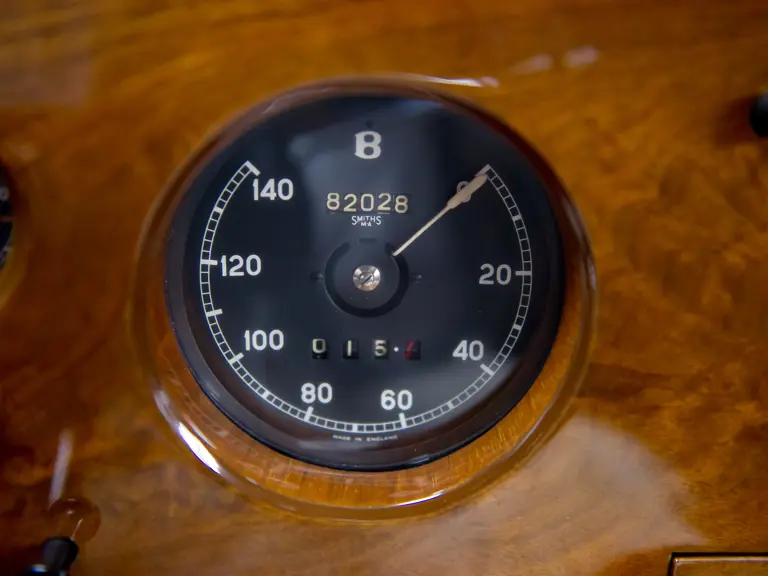
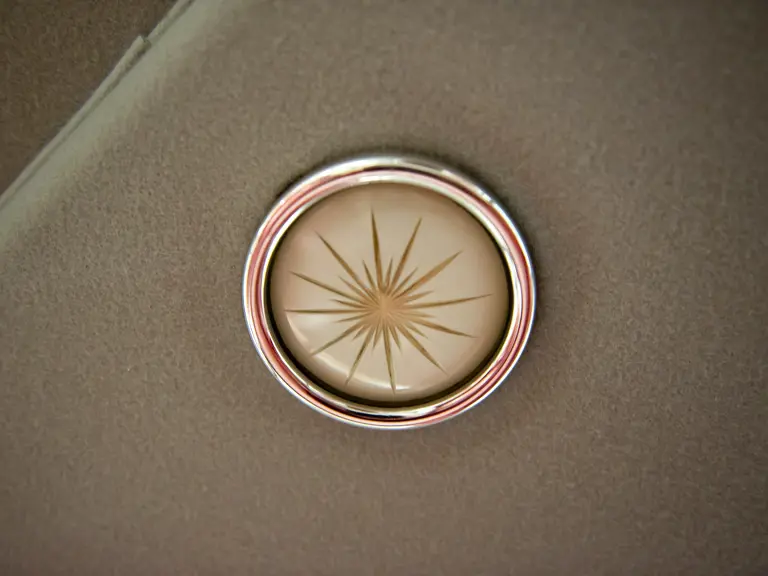
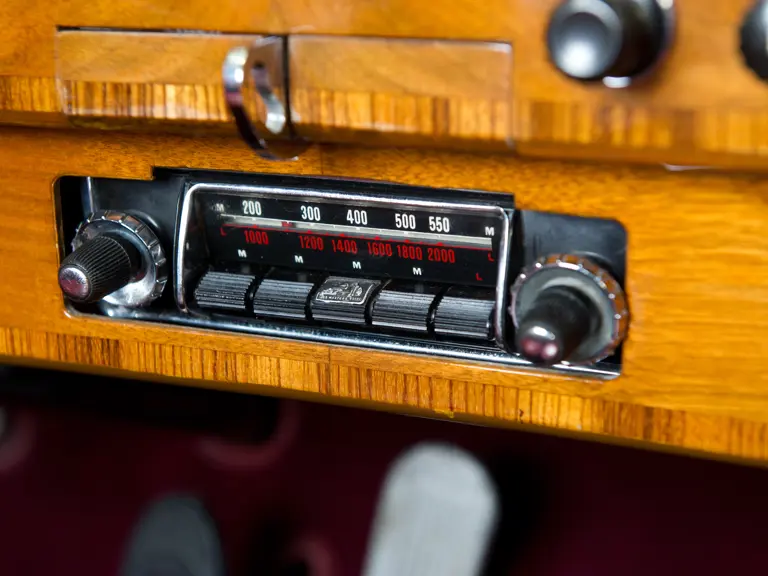
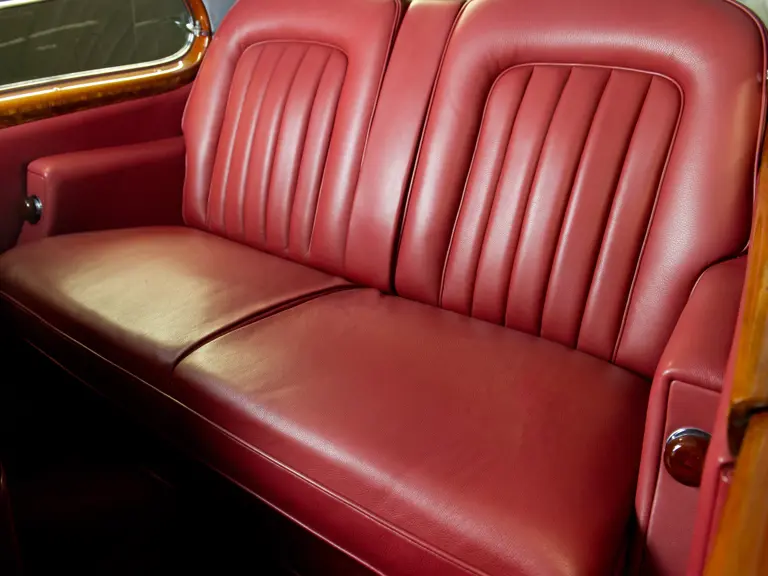
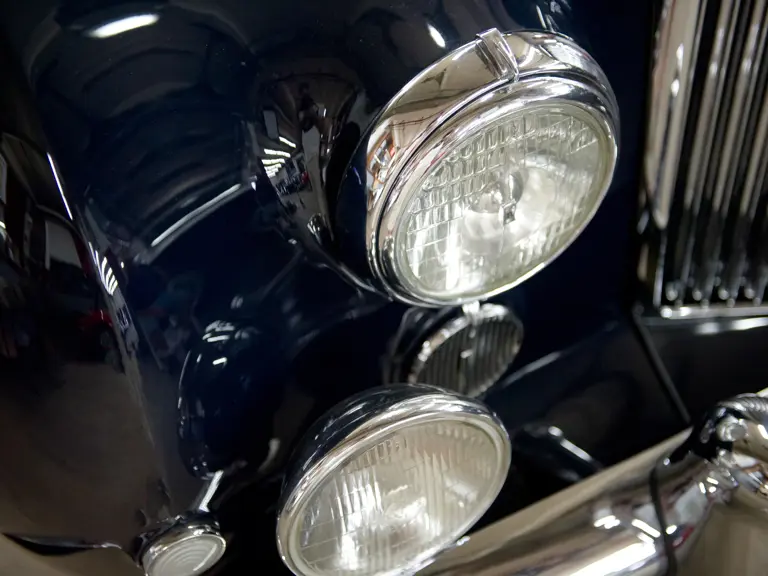
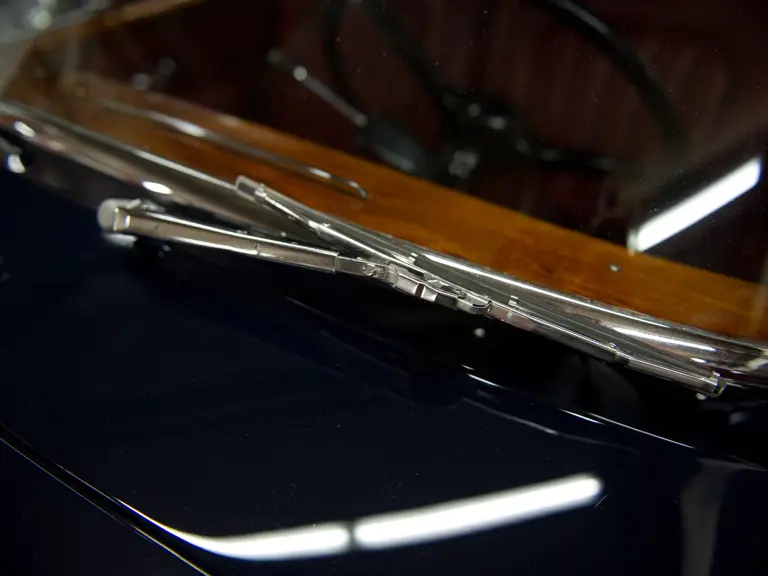
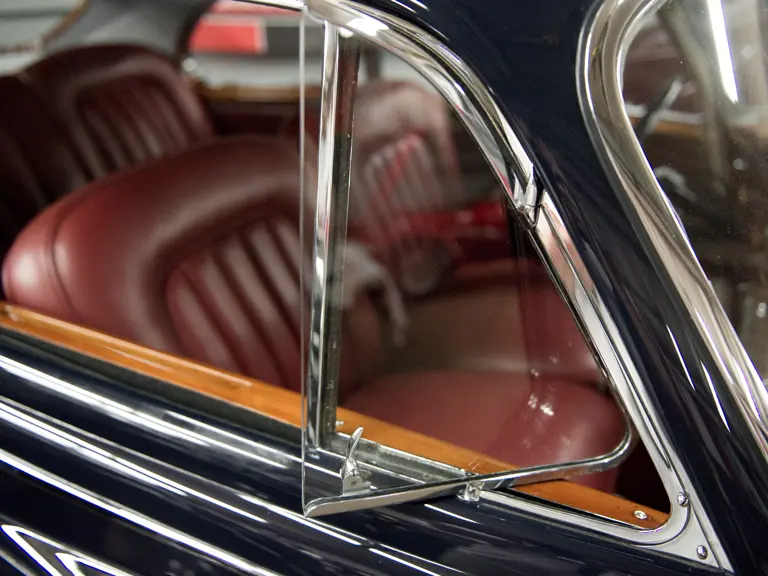
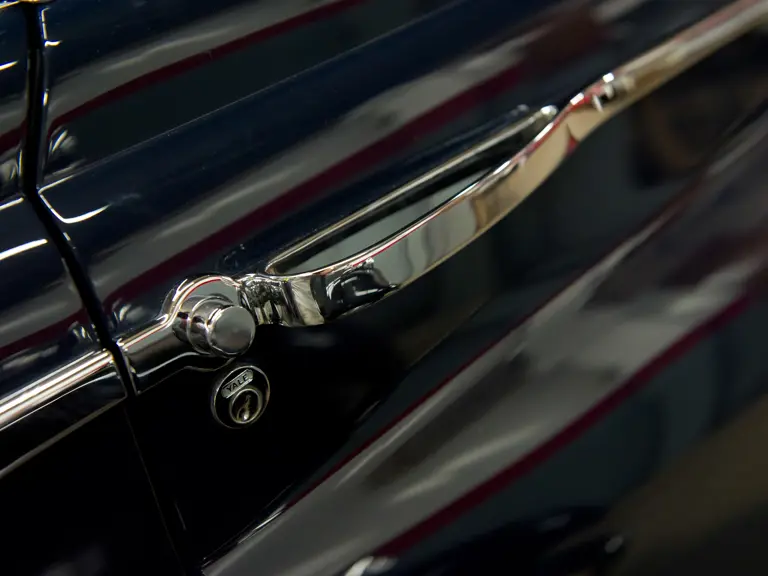
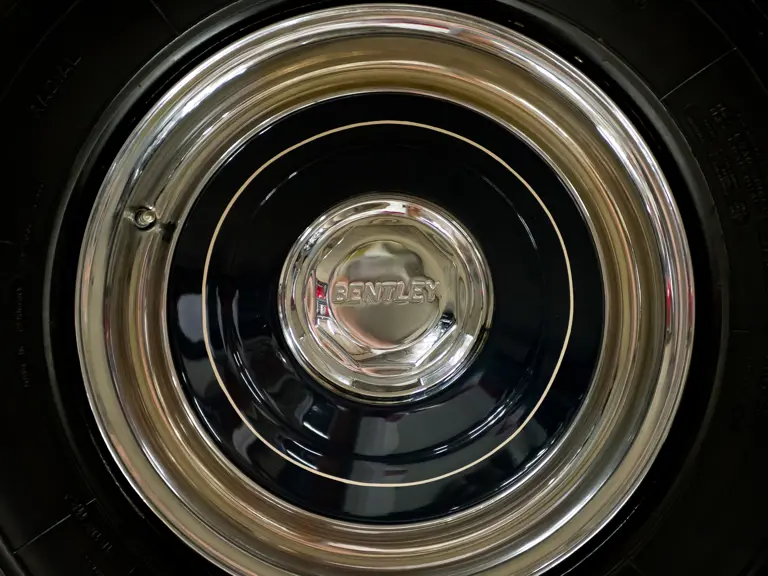

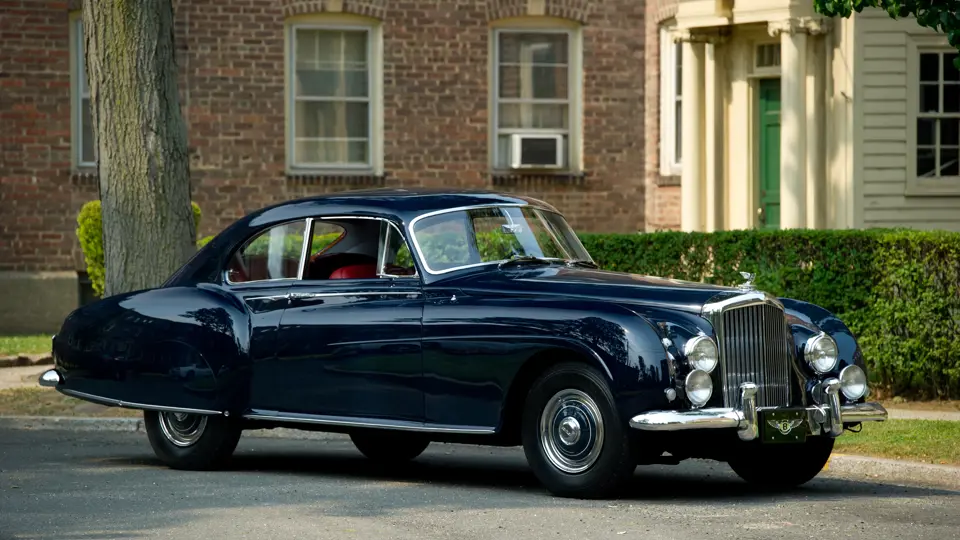
 | Monterey, California
| Monterey, California


